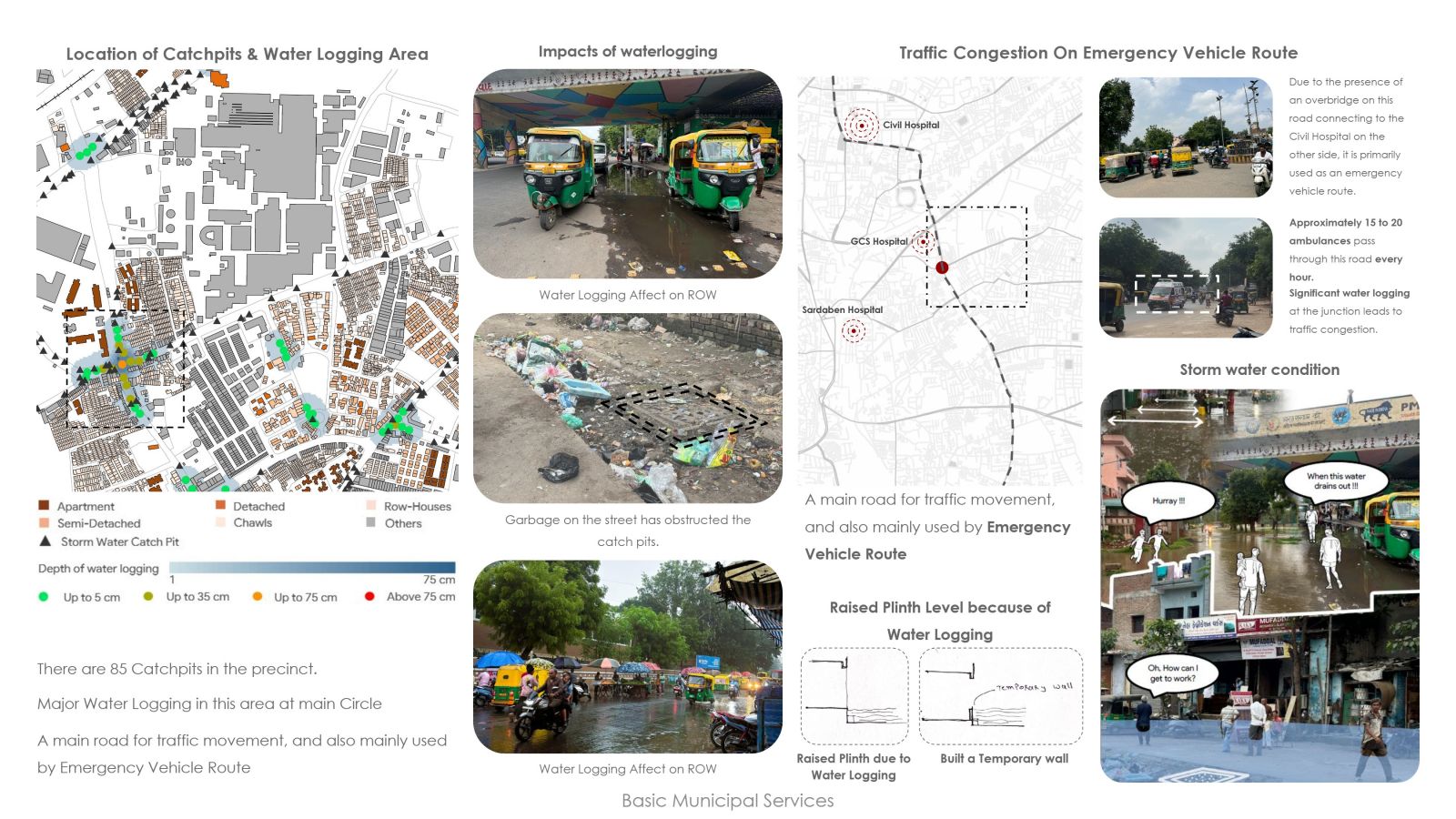Your browser is out-of-date!
For a richer surfing experience on our website, please update your browser. Update my browser now!
For a richer surfing experience on our website, please update your browser. Update my browser now!
This work will address the high-density urban habitation problems of Amdupura through chawls, underutilized industrial zones, and inadequate public infrastructure. The main objectives are walkability, strengthening connections of public transport, and solving waterlogging issues and waste management. The study will explore the sustainable land use approach to optimize available space with mixed-use development initiatives and equitable public spaces. Thus, the precinct will be well-designed to be livable, economically dynamic, and environmentally sustainable.









